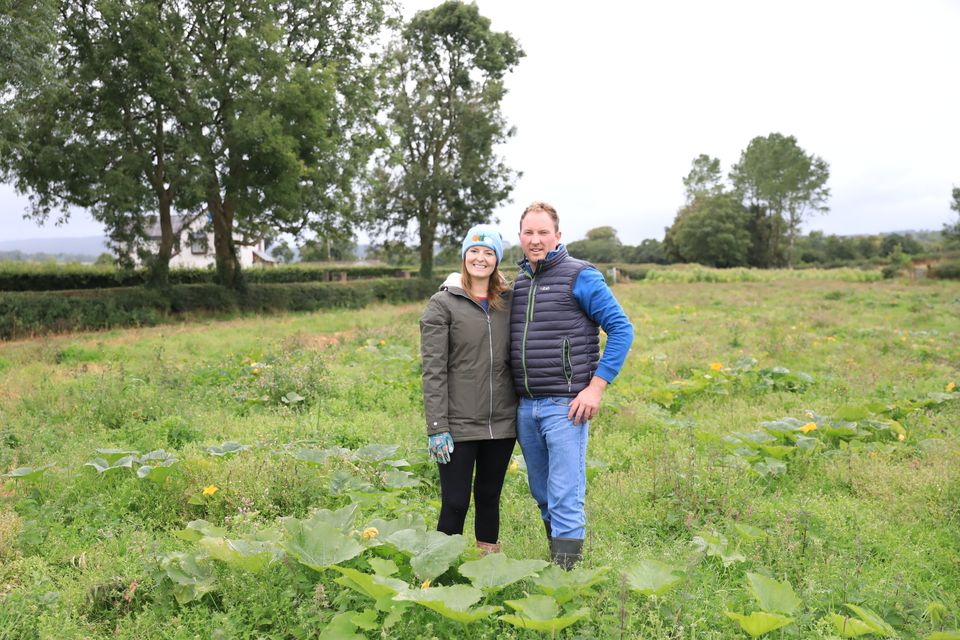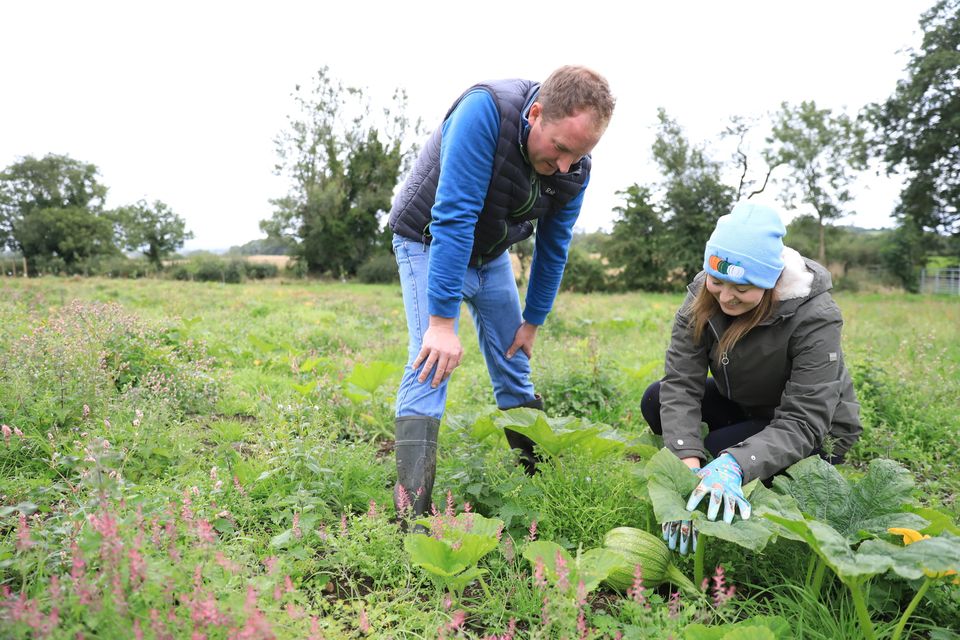Pumpkin patches have grown in popularity across Northern Ireland but concerns have been raised about food waste and harmful greenhouse gas emissions.
There is expected to be a boom in sales in the next few weeks as Halloween draws near.
But people are being encouraged to think of the impact of the October tradition.
When pumpkins decompose they release methane, a gas which can be 20 times more harmful for the environment than carbon dioxide.
In the UK, 35% of the greenhouse gases emitted are attributed to the food system, and a quarter of this comes from food waste or food loss.
According to Hubbub, a charity which campaigns for environmental change, of the estimated 39.9m pumpkins bought last year in the UK, 22.2m went to waste.
Stephane Durand, an Agri-Food Quest Competence Centre director who collaborates with Queen’s University Belfast and Ulster University, said the issue of food waste is a global one and that pumpkin patches only “scratch the surface” of wider concern over the consumer food chain.
“The UK has one of the highest percentages of food waste in Europe. And worldwide, a third of the food that is produced for human consumption is wasted,” he said, pointing out that the majority of this is wasted at farm level, before it even reaches the shelves of supermarkets.
“It is estimated that there are 3.3m tonnes of food which may be lost and wasted in farms in the UK.”
Claire and her husband William Clark, who grow pumpkins at their Craighall Farm in Co Antrim (Picture by Peter Morrison) in Antrim (Picture by Peter Morrison)
Mr Durand said that some of the issues of this can lie with the retailer.
“When big supermarket chains put orders in for pumpkins around Halloween, they want the big, round orange ones, which can be a real headache for farmers,” he explained.
“They have to be the right size, shape, weight and even colour for them to sell better — but this is contributing to the waste.
“This is changing slightly, where supermarkets are now taking the slightly smaller ones to sell at a cheaper price, but the issue remains around people’s perceptions of the pumpkin being ornamental and not a food source.”
Kirsty Pourshahidi
Kirsty Pourshahidi, a senior lecturer in food science and technology at Ulster University’s School of Biomedical Sciences, said that many supermarkets label them as “carving pumpkins”, separating it from the idea of food.
“There are many different varieties of pumpkins that range in size and taste, but these larger ‘carving’ pumpkins are often bred primarily for size, which can give them a thinner, more fibrous flesh,” she said.
“They can contain more water as well, so it’s best to go for the smaller varieties for increased taste and sweetness.
“Not eating these pumpkins is only significantly adding to the food waste problem every year, which has environmental and economic consequences,” she added.
“Pumpkins are not immune to rising food prices, so this is also a valuable food commodity to waste every year… It’s a lot of nutrients and money just to simply throw away.”
Claire and William Clark at Craighall Farm in Co Antrim (Picture by Peter Morrison)
The expert said that there are a variety of things you can do with your pumpkin to stop this issue from rising further.
“Aim to buy smaller pumpkins that taste better so you are more likely to eat them,” she said.
“And people should be aware that pumpkins can also be decorated, rather than carved, which will help to stop them rotting too quickly.
“If you do carve your pumpkin, don’t waste the parts carved out — roast them and keep for curries, stews or soups. The seeds are edible too. There are lots of different recipes to try online.
“If you do need to dispose of any pumpkin waste, choose your compost bin or bury cut-up pieces of pumpkin into the soil in your garden to act as a natural fertiliser. Just make sure it’s well covered and give it plenty of time to fully decompose.”
One Co Antrim farm is hoping to offer a “sustainable” alternative to pumpkin patches by offering the fruits in a variety of shapes and sizes, all grown from seed on the farm without the use of pesticides.
Claire and William Clark of Craighall Farm started off growing pumpkins on their site as a “competition” between the pair, but it soon snowballed into an annual tradition, with the farm producing thousands of pumpkins each year.
They sell the gourds straight from the field where people can pick what they like, with proceeds being donated to charity.
Claire, who works as a primary school teacher, said that any of the pumpkins not picked are fed to the cows on the farm as a “tasty treat”.
“With so many patches around, William and I wanted it to be as natural as possible, where we can harvest our own and grow everything ourselves, use our own seeds and keep it sustainable, where everything is in-house and not outsourced,” she said.
“We never spray our pumpkins with any pesticides either, so there may be a few weeds around — but sure, that’s life!”
Claire said that people enjoy the fact that her farm’s pumpkins aren’t always orange or perfectly shaped.
“They come in all different sizes, with bumps and different imperfections, but they are totally natural — that’s the way they are,” she said.
“They can be green, white, orange or yellow for a number of reasons — such as cross-pollination, because we have our own honeybees on site to make our own honey, so sometimes the pumpkins are totally random. But they taste just as delicious.”


